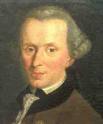II.a. The role of motion in physics

In the following paragraphs I am quoting from Richard Wolfson’s Simply Einstein: Relativity Demystified, in particular from his discussion of the fundamental role of motion in all physical reality. He is concerned with distinguishing among Newton’s, Galileo’s and Einstein’s conceptions, but his generalizations here hold for all:
“The history of physical science [I am reminded of Benjamin’s interest in what he calls “natural history,” that is, history as arising out of, or imposed upon, nature, as it is in Chinese painting] is intimately connected with the understanding of motion. . . . The study of motion is profound for several reasons. First, it is the source of all change. Imagine a world without motion [cp the static world of painting in general but in particular the static view of the landscape in Chinese painting, with no wind, or change in the clouds, or moving waves in the ocean, or rustling in the leaves of trees, and only the “stop action” of water falling from a cliff or flowing in a stream]. Earth stops moving, so it is perpetual daytime [note the predominance of day-time imagery in Chinese painting]. Earth stops revolving around the Sun, so it is always the same season [note the frequent references to but one of the four seasons in the titles of Chinese paintings].
“Your body cannot move, so you are forever stuck in one spot [hence the painter’s need to introduce motion by representing a traveler, by referring or alluding to travel, or by the incorporation of experience or the allusion to history]. Nothing evolves without motion, transforms, mutates, develops or otherwise changes [note here how apparently at odds is landscape painting in China with her fundamental cultural text, the I Ching, or Book of Changes]. And there are no molecules jumping across the synapses of your brain, so there is no thought [cp. the Chinese painter’s introduction of “thought” in the calligraphy of the poetic colophon]. Absent motion, everything stops. Period. [Much of what I have been saying in these interpolated comments of mine, is, of course, also true of western landscape painting, although landscape in the West is a far less pervasive artistic mode, especially in pre-modern painting.]
“Conversely, if motion does exist (as it obviously does), then understanding motion will help you understand night and day, the seasons, the chemical reactions that result from the motion of atoms and their electrons, and even the functioning of your brain as it is based in the motion of molecules. Understanding motion at the fundamental level goes a long way toward explaining the behavior of matter [one wonders whether Chinese painting has been examined in the light of Chinese science] . . . These concepts are themselves closely associated with the idea of motion. What does it mean to move? It means getting from one place to another [cp. Travel] and doing so in some time. Whatever else motion means, it involves passing through time and through space [Kant’s two a priori categories]. So motion [cp. Fahren and Erfahrung] holds the key to understanding time and space [and for us, Chinese painting!].”
II.b. An anthology of quotations on Travel in Chinese Poetry